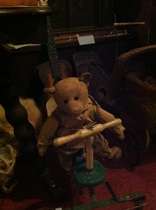
Of course, it is the associated experiences between people and otherwise unexceptional things that cause us to form attachments. I am interested today in the attachments we make between ourselves and our childhood toys.
On the second floor of our museum, in the European settler and homesteading exhibit, there are some children’s toys. Specifically, there is a bear that has caused me both laughter and fear. Its understandable wear and tear throughout the past one hundred years lends itself to a sense of neglect, though I am sure it was once well loved. What was apparently once soft, velour fur has worn off (cue: Fuzzy Wuzzy was a bear, Fuzzy Wuzzy had no hair). Its beady, opossum-like eyes, which are made from what appears to be black marbles, seem to follow me as I carry out opening and closing duties. It has become a joke that the bear, reminiscent of possessed creatures from horror-films, could follow me for brief moments while I am alone upstairs. Upon further investigation, I discovered that said “Teddy Bear” won a 1914 P.N.E. contest for its outfit, including a khaki jacket, a pair of trousers, and an olive-coloured backpack, which is more than most of us humans can boast.
I would like to apologize to that bear for my previous judgements, because I am now becoming acquainted with its equivalent in my life. I just finished my second year of university at McGill, and hadn’t intended to come home this summer, but the coffers were empty. And so, my apartment was sublet to software engineers with questionable cleanliness, and I was back here to work the summer months away. Though not in a bustling, activity-full metropolis, I cannot complain: the Sunshine Coast (especially the magnificence that is my workplace, Lower Gibsons) is no punishment. I have friends back in their hometowns for the summer, including Istanbul and Beijing, where the government won’t allow them access to Facebook or YouTube. I can’t complain. However, one side effect of being home is dealing with what I’ve left behind. This includes childhood toys.
Unearthing an old toy from a storage box is somewhat like unearthing a historical artifact. They are both old, and they both ideally hold some meaning to the viewer. As I sort through the old mementos that I am supposed to get rid of, a flood of memories comes rushing back, mixing the good and the bad. In discussions with some older people, they described the almost visceral reactions that they have to certain sounds, songs, smells, objects, and places. While they can’t remember the name of the celebrity on TV last week or the dinner they had last night, the opening notes to a song conjures up an exact location, a precise feeling, and all sorts of memories.
Last blog, I wrote that engaging with historical pieces may be a project of finding a special connection through imagination, which is similar to the selective “specialness” between a person and their childhood toy. For me, the key to acknowledging the value of the formerly creepy teddy bear (now, in my opinion, an esteemed member of the museum) was linking him/her to my own life. What kind of connections can you make between yourself and the museum?
-Emma
P.S. Our giftshop sells cards with amazing artwork by Makiko Kitama, who specializes in creating art of people's childhood toys, thus emphasizing the importance. Look at this one! It’s the teddy!

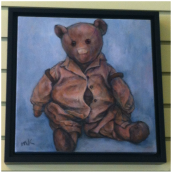
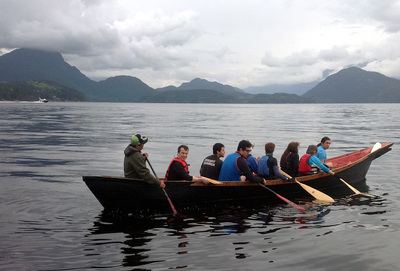
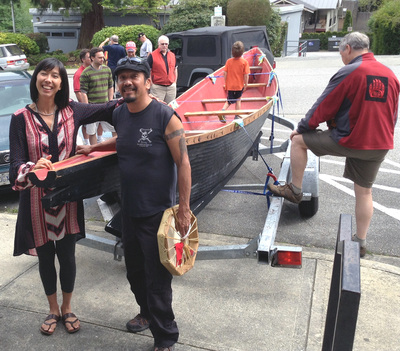
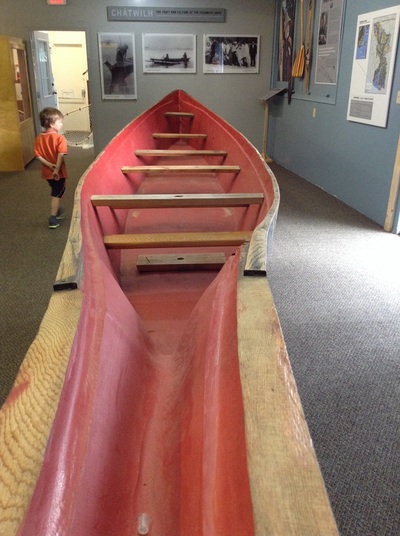
 RSS Feed
RSS Feed
